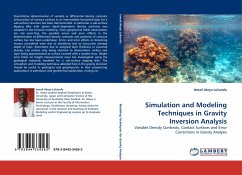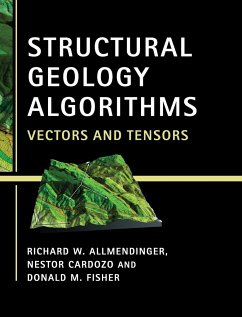
Mathematical analysis of gravity anomalies
Concepts, algorithms and computer programs
Versandkostenfrei!
Versandfertig in 6-10 Tagen
52,99 €
inkl. MwSt.

PAYBACK Punkte
26 °P sammeln!
Enormous progress has been made in the development of computer based algorithms to analyze the gravity anomalies of subsurface geological structures. The parabolic density function which describes the density-depth dependence of sedimentary rocks is used to design new algorithms coupled with relevant codes to analyze the gravity anomalies due to 2-D and 2.5-D fault structures defined with planar fault planes. Forward modeling schemes to compute gravity responses due to 2-D and 2.5-D listric fault structures are also included. Automatic techniques based on modeling and inversion principles to a...
Enormous progress has been made in the development of computer based algorithms to analyze the gravity anomalies of subsurface geological structures. The parabolic density function which describes the density-depth dependence of sedimentary rocks is used to design new algorithms coupled with relevant codes to analyze the gravity anomalies due to 2-D and 2.5-D fault structures defined with planar fault planes. Forward modeling schemes to compute gravity responses due to 2-D and 2.5-D listric fault structures are also included. Automatic techniques based on modeling and inversion principles to analyze the gravity anomalies due to 2- D and 2.5-D sedimentary basins besides 2-D and 2.5-D pull-apart basins are presented with relevant software. Automatic modeling and inversion techniques for the analysis of measured gravity anomalies due to 3-D sedimentary basins are presented. Also new is the automatic determination of regional gravity background in case of inversion algorithms. The robustness of each technique is demonstrated with both synthetic and real field gravity anomalies. This book is useful for academicians, researchers and field geophysicists.












